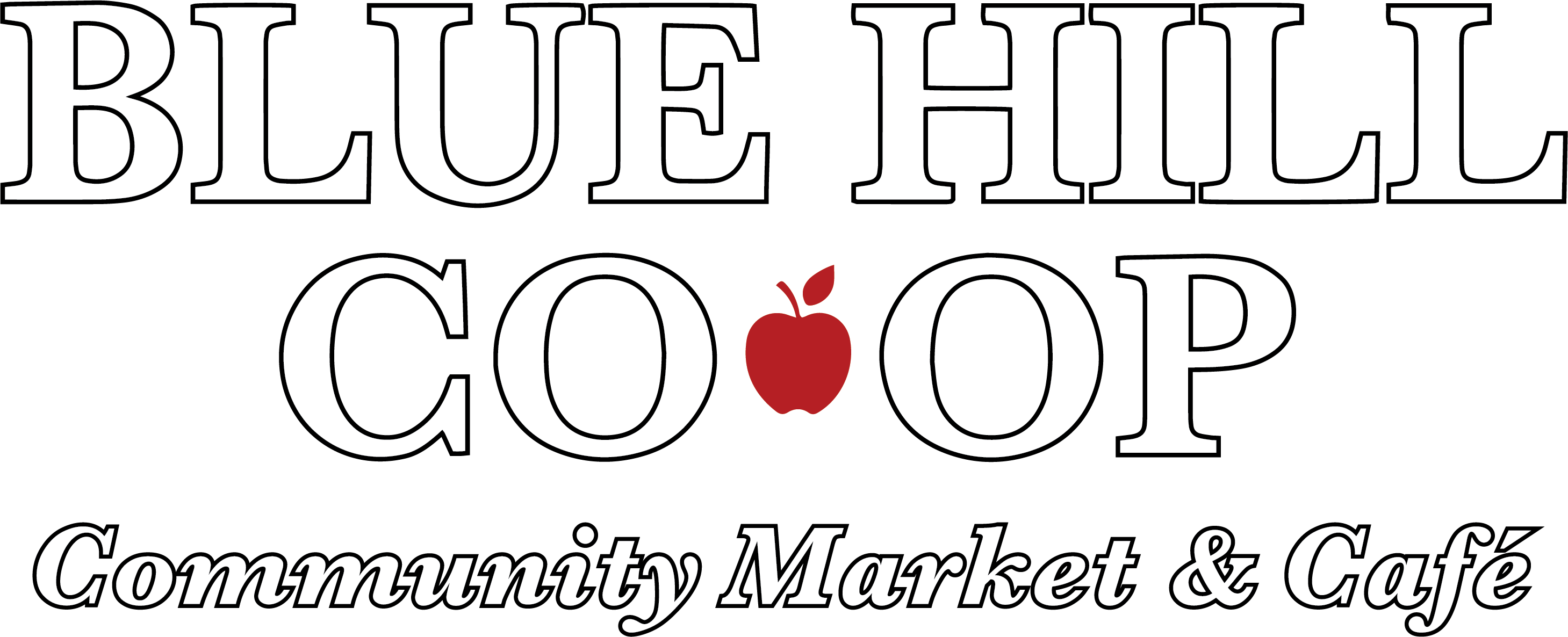Sustainability at the Co-op
Built for Efficiency
From quality foods and products, to a flourishing community, to a healthy planet, the guiding principle of our Co-op is health. All throughout the dreaming, planning, and construction of 70 South Street, making our store as efficient and green as possible was always a top priority. The building is constructed to be airtight and thoroughly insulated, with high-efficiency windows. We also emphasized using low or no-VOC materials.
Natural Light
Many conventional grocery stores are constructed without much natural light. Windows are a rare feature, making the interior a glaring, fluorescent environment, removed from all sense of time and place. Our southeast-facing window bank in the produce department lets in a vast amount of natural light, which reaches all the way to the meat case across the store. The Café seating area has windows all around. Not only does this create a more natural feeling environment for our shoppers and employees, but it reduces the need for interior lighting. We also use full-spectrum light bulbs in the store lighting.
Trees and Native Plants
In order to construct our building, we had to cut down some trees. Once we were moved in, we undertook the replanting of the surrounding area and in beds around the store. The total number of trees planted was 473. That’s 11 trees in the outdoor dining area, 30 trees in the parking lot islands, and 432 trees around the perimeter slope. The mix of trees includes paper birch, white pine, black spruce, white spruce, red maple, river birch, pitch pine, apple serviceberry, and yellow birch. A generous donation from a Co-op owner fully funded this project. The landscaping around the property also included planting many native plants. We're currently working with Native Gardens of Blue Hill and Blue Hill Heritage Trust to plant a wild ecosystem on our back slope, behind the parking lot.
Air Circulation
Did you know that the Co-op’s environmental system is designed to change the air in the retail area 6-10 times per hour? The ‘make-up’ air is brought in from outside and conditioned (warmed or cooled) before being sent to the heat pumps in the area. The heat pumps add this make-up air to the air they are circulating in the area. The return air (the air being pulled out of the store) is pulled back through a separate system of return air ducts and exhausted to the exterior on the back of the building. On its way out it goes through the same unit that supplies fresh air to the store and the old air transfers about 70% or so of its heat to the incoming fresh air before that air is heated (during cooling season the outgoing air picks up the heat of the incoming air).
Our Solar Array
Right from the start, we knew that we wanted our new Co-op to utilize the sun’s energy. That’s why our roof is so massive. Now it’s home to over four hundred panels, which went online on December 16, 2019. The 414 panels can produce 350 kWh on a sunny winter day (offsetting around 40% of our energy costs). In the summer it produces even more.
If you aren’t familiar with terms like kWh, MWh, and GW-hours, you can use this link and brush up on your electrician jargon.
In a year our 414 solar panels generate enough power to:
Brew 7,828,640 Cups of Coffee in a year
Bake 183,483 Chocolate Chip Cookies in a year
Light a home with LED lightbulbs for 244 Years
Cook 440,361 Bowls of chili in a year
Offset driving the perimeter of the United States 36 times
Keep 143,998 pounds of carbon out of the atmosphere every year
Waste-Heat Retrieval
Refrigeration is a big reason why traditional grocery stores have such large carbon footprints. That’s why we invested in a waste-heat recovery system. This fancy piece of machinery captures the heat produced by our cooling systems and recycles it to heat our new building in the winter and cool it in the summer. It also heats all our water. Our refrigerators and freezers are also very efficient.
Storm Water Drainage
Erosion can be devastating to the environment, and it is often caused by pavement. We needed to have a large parking lot, but we also wanted to be responsible. And so, the Co-op invested in a massive stormwater drainage system. This sophisticated piece of engineering captures the falling water, sends it through a series of chambers, and releases it in a controlled way that will have as little impact on the hill and forest behind us as rainfall would.
EV Charging
The Co-op has two EV charging stations available for our customers use for $0. 25 per kilowatt-hour. We’re excited to provide these chargers to the community and hope that having a charging option in town will encourage more people to switch to EVs or plug-in hybrids in the future. In 2024, our chargers had 1,155 charging sessions with 269 unique drivers.
Chickadee Compost
We’re proud to work with Chickadee Compost as one of their drop-off locations and for all our food waste.
Chickadee Compost is a local business that is composting food scraps from the Blue Hill peninsula’s households, businesses, and schools; along with crab waste from local crab pickers, and spent grain from a local brewery. You can sign up on their website where you will get a bucket for your food scraps and the code for the drop-off sheds. When it’s full, drop it off at one of their sheds (like the one at the Blue Hill Co-op).
Chickadee Compost also hosts educational visits for local schools and community groups, to explain the composting process and learn more about food waste diversion and the importance of composting for our community, to decrease methane emissions, to sequester carbon in our soils, and to improve soil health.
In 2022, Chickadee Compost diverted over 250,000 pounds of food scraps, crab waste, and spent grain from the solid waste stream.



